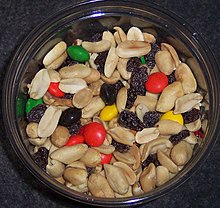**Snack Definition and Types**:
– A snack is a small portion of food generally eaten between meals.
– Snacks are often less than 200 calories.
– Snacks come in various forms, including packaged snack foods and items made at home.
– Snack foods are designed to be portable, quick, and satisfying.
– Processed snack foods contain sweeteners, preservatives, and appealing ingredients like chocolate and peanuts.
**Snack History**:
– Peanuts became popular in the U.S. after the Civil War.
– Pretzels were introduced to North America by the Dutch in the 17th century.
– Snacking became an all-American pastime by the 1950s.
– Indian snacks have a history of being flavorful and complex.
– Japanese snacks have a mix of traditional and modern offerings.
**Global Snack Foods**:
– Indian snacks (chaats) include Pani Puri and Samosas.
– Indonesian snacks include kue like tahu isi and pisang goreng.
– Japanese snacks range from onigiri to melon pan.
– Nuts have been a staple snack in the Middle East for centuries.
– The Middle East nut market was valued at $119 billion in 2022.
**Spreads and Dips**:
– Hummus, mouhammara, baba ganoush, and Ashta are popular Middle Eastern dips/spreads.
– These dips/spreads offer a variety of flavors and textures using ingredients like chickpeas, walnuts, eggplants, and milk.
**Nutrition and Health**:
– Health Canada recommends healthy snacks like fruits, vegetables, nuts, and cereal grains.
– American children snack more frequently now, consuming 570 extra calories daily compared to the past.
– Nuts have ancient medicinal benefits and are rich in symbolism.
– Snacking habits impact daily calorie intake, influencing dietary balance.
– The Middle East and Africa nuts market is projected to grow, reflecting the global trend towards healthier snacking options.
A snack is a small portion of food generally eaten between meals. A snack is often less than 200 calories, but this can vary. Snacks come in a variety of forms including packaged snack foods and other processed foods, as well as items made from fresh ingredients at home.

Traditionally, snacks are prepared from ingredients commonly available at home without a great deal of preparation. Often cold cuts, fruits, leftovers, nuts, sandwiches, and sweets are used as snacks. With the spread of convenience stores, packaged snack foods became a significant business.
Snack foods are typically designed to be portable, quick, and satisfying. Processed snack foods, as one form of convenience food, are designed to be less perishable, more durable, and more portable than prepared foods. They often contain substantial amounts of sweeteners, preservatives, and appealing ingredients such as chocolate, peanuts, and specially designed flavors (such as flavored potato chips). Aside from the use of additives, the viability of packaging so that food quality can be preserved without degradation is also important for commercialization.
A snack eaten shortly before going to bed or during the night may be called a "bedtime snack", "late night snack", or "midnight snack".
